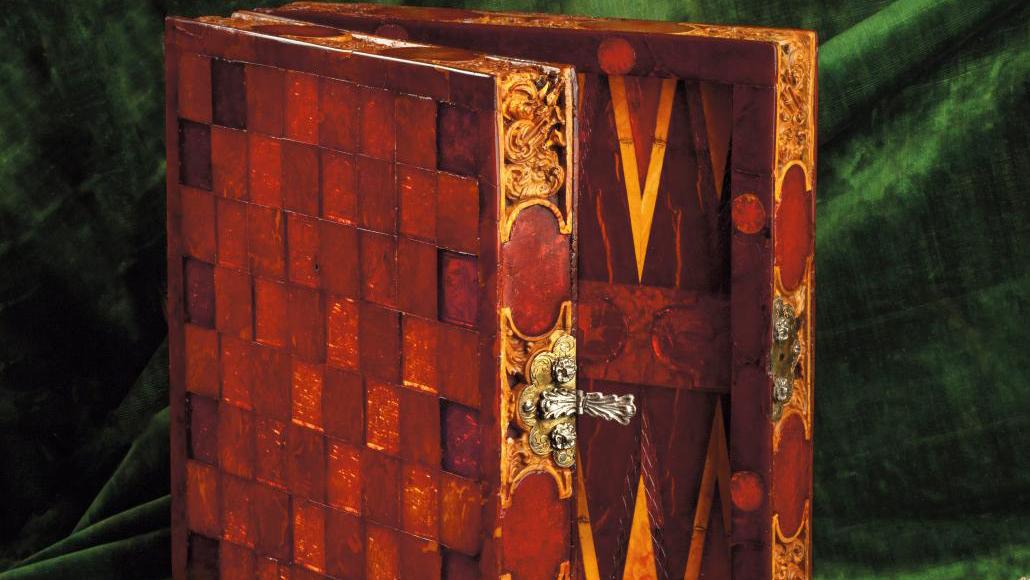This exhibition staged by the Kugel Gallery in Paris is the very first devoted to amber in France. It took some 20 years to assemble the masterpieces illustrating the history of this fossil resin.
Michel Redlin, game box complete with pieces, two dice and chess set, made in Danzig, c. 1680.
Photo Guillaume Benoit
Amber captures every shade of the sun from dusk to dawn, and has its own place in mythology. As both food for myth and materialization of the elusive, amber commemorates the lineage of Helios, the sun god, who drove his chariot across the sky from east to west every day. His son Phaeton, eager to prove his divine worth, seized the chariot, and the overexcited horses bolted out of control. The sun's trajectory shifted, scorching the Earth and creating deserts blazing with light or areas of icy darkness devoid of heat. Zeus, thoroughly alarmed, struck down the chariot, ending both its mad race and Phaeton's life. Inconsolable in their sorrow, Phaeton's sisters metamorphosed into poplar trees and their tears solidified into amber, preserving their grief and their brother's dazzling radiance forever. It is an astonishing story that touches on two singularities of this strange material: its ability to imprison life, and its archaic origins in the plant world. When he studied insect or plant inclusions frozen in amber, Pliny the Elder certainly guessed that this resin was extraordinarily old, without convincing his successors or suspecting…
com.dsi.gazette.Article : 47362
This content is for subscribers only
You still have 85% left to read.
